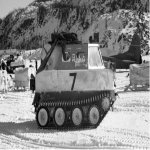Spotting their shots and lookout.
BB-4 USS Iowa
Lattice mast
From Wikipedia, the free encyclopedia
Jump to navigationJump to search
Lattice masts, or cage masts, or basket masts, are a type of observation mast common on United States Navy major warships in the early 20th century. They are a type of hyperboloid structure, whose weight-saving design was invented by the Russian engineer Vladimir Shukhov. They were used most prominently on American dreadnought battleships and armored cruisers of the World War I era.
In the age of sail, masts were required to support the sails, and lookouts were posted on them; with the advent of engine-powered warships, masts were retained and used for observation and to spot fall of shot. The purpose of the lattice structure was to make the posts less vulnerable to shells from enemy ships, and to better absorb the shock caused by firing heavy guns, isolating the delicate fire control equipment (rangefinders, etc.) mounted on the mast tops. However, the masts were found to be easily damaged by the inclement weather experienced at sea by naval ships during typhoons and hurricanes: USS Michigan's mast was bent right down to the deck by such a storm in 1918. As the caliber and range of ships' guns increased, heavier rangefinders were required, and the powerful guns and engines created shock and vibrations; lattice masts were eventually phased out in favor of the more rigid tripod masts favoured by the Royal Navy.



















































































